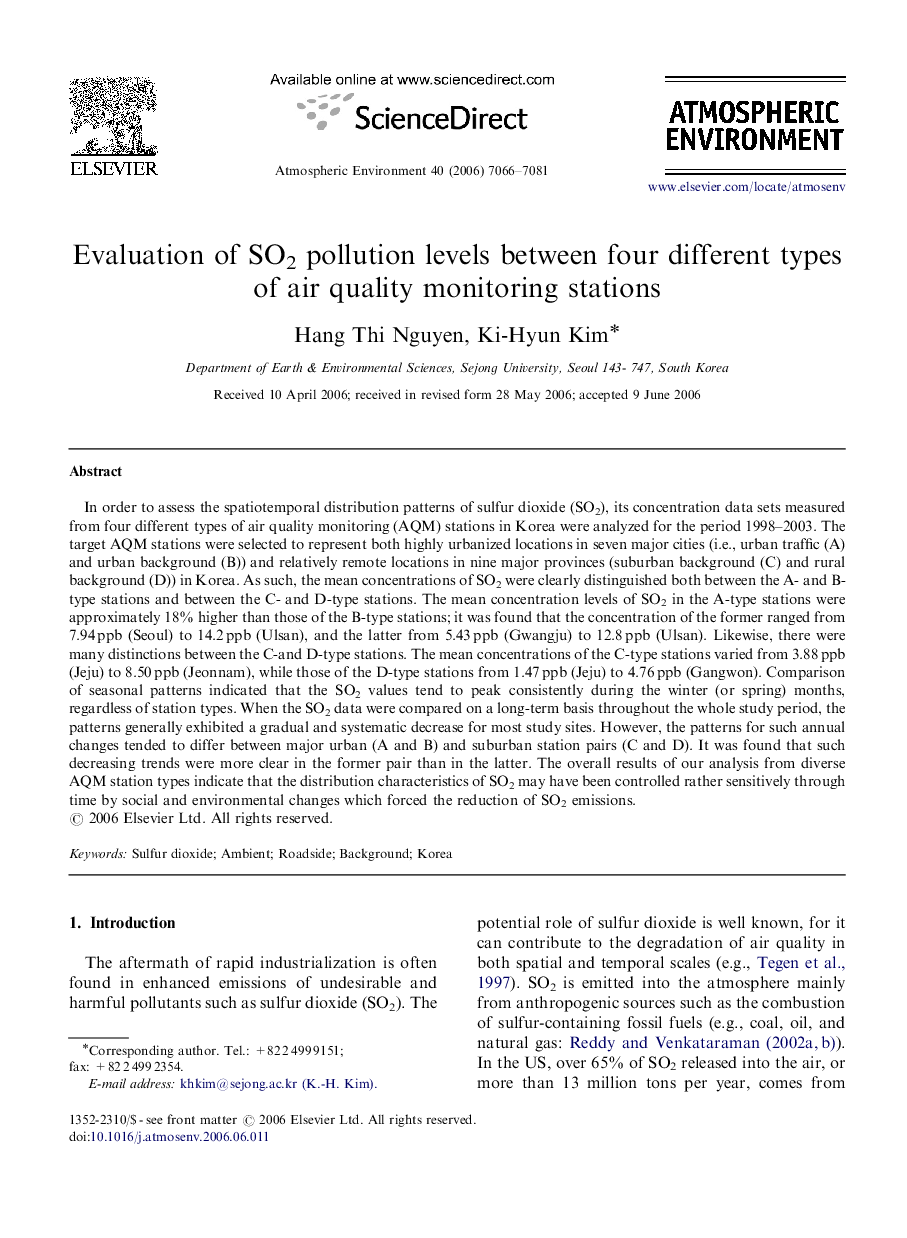| Article ID | Journal | Published Year | Pages | File Type |
|---|---|---|---|---|
| 4443660 | Atmospheric Environment | 2006 | 16 Pages |
In order to assess the spatiotemporal distribution patterns of sulfur dioxide (SO2), its concentration data sets measured from four different types of air quality monitoring (AQM) stations in Korea were analyzed for the period 1998–2003. The target AQM stations were selected to represent both highly urbanized locations in seven major cities (i.e., urban traffic (A) and urban background (B)) and relatively remote locations in nine major provinces (suburban background (C) and rural background (D)) in Korea. As such, the mean concentrations of SO2 were clearly distinguished both between the A- and B-type stations and between the C- and D-type stations. The mean concentration levels of SO2 in the A-type stations were approximately 18% higher than those of the B-type stations; it was found that the concentration of the former ranged from 7.94 ppb (Seoul) to 14.2 ppb (Ulsan), and the latter from 5.43 ppb (Gwangju) to 12.8 ppb (Ulsan). Likewise, there were many distinctions between the C-and D-type stations. The mean concentrations of the C-type stations varied from 3.88 ppb (Jeju) to 8.50 ppb (Jeonnam), while those of the D-type stations from 1.47 ppb (Jeju) to 4.76 ppb (Gangwon). Comparison of seasonal patterns indicated that the SO2 values tend to peak consistently during the winter (or spring) months, regardless of station types. When the SO2 data were compared on a long-term basis throughout the whole study period, the patterns generally exhibited a gradual and systematic decrease for most study sites. However, the patterns for such annual changes tended to differ between major urban (A and B) and suburban station pairs (C and D). It was found that such decreasing trends were more clear in the former pair than in the latter. The overall results of our analysis from diverse AQM station types indicate that the distribution characteristics of SO2 may have been controlled rather sensitively through time by social and environmental changes which forced the reduction of SO2 emissions.
